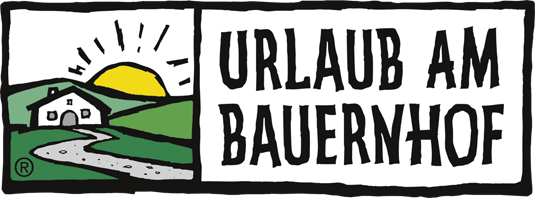Customs and traditions in winter
Especially when the days are short and the nights are long, when it is bitterly cold and people live on supplies that have been painstakingly acquired over the past year, customs help to dampen fear of the inexorable winter and to strengthen hope for an early spring. The typical winter customs are therefore mostly based on the expulsion of winter and the summoning of spring. Evil spirits are to be driven out and luck and blessings are to be attracted. In addition, people like to oracle. Predictions for the coming year can usually only be made on certain lot days and should provide information about upcoming weddings, births, deaths and harvest successes.
The rough nights are particularly important. All sorts of strange things happen during these seemingly magical nights. The cattle in the barn can suddenly speak and humans not only have the opportunity to glimpse into the future, but can also drive away evil spirits and attract happiness by performing certain rituals. The following nights are part of the rough nights:
- December 21 - 22.12.
- 12/24 - 25.12.
- December 31 - 01.01.
- 05.01. - 06.01.
Perchten
Perchten are mainly found in the Alpine region and are divided into good Schönperchten and bad Schiechperchten. The origin of the Perchten can no longer be perfectly clarified today, but most likely dates back to pagan times. Perchten appear in groups - so-called passes. While Krampus runs take place before Christmas according to tradition, Perchten runs are traditionally only held between Christmas Eve and Epiphany.
While Schönperchten are usually dressed in splendid and colorful costumes, Schiechperchten immediately attract attention because of their costumes, which are certainly frightening for outsiders. Not infrequently they wear shaggy furs and artfully carved wooden masks - so-called larvae - that with their horns resemble devilish grimaces. The fur perches called Bärigln can be found in Altaussee, for example.
Both beautiful and Schiechperchten wear bells with which they ring during their runs.
Perchten occur in the rough nights. In these it is your task to monitor the regulations in force for these nights. Schiechperchten drive away the Schiechperchten and with them the winter. They bring blessings and happiness for the new year.
Glöcklerläufe
The Glöckler runs are typical of the Salzkammergut region. This custom, which has been declared an intangible world cultural heritage by UNESCO, has its origin in the village of Ebensee am Traunsee. There he was mentioned in writing for the first time in 1850. Glöckler runs are practiced throughout the Salzkammergut.
The Glöckler are Schönperchten. These are good spirits of light that bring brightness and warmth and at the same time drive away evil spirits. On the evening of January 5th, the last winter night, the Glöckler move from outside the village towards the center, going from house to house. The ringing of the bells worn around the waist is said to ring out winter and attract spring. The special rhythm of their uniform steps should in turn wake up the seeds sleeping in the earth and encourage them to grow. In addition, they fight a symbolic battle with the fur perches, which symbolize winter.
Visually, the Glöckler immediately catches the eye with their artfully crafted costumes. In addition to plain white robes, they wear elaborately designed bell-ringer caps. These are illuminated from the inside and thus offer a wonderful picture in a dark winter night. The paper caps, which are up to two meters high, three meters long and weigh 15 kilograms, are traditionally manufactured in different designs. Among them you can find suns, crescents, stars, crowns and pyramids, which are elaborately designed with pictures and ornaments.
Glöckler usually run in groups of twenty to thirty runners. So they move rhythmically and dance from house to house in order to drive away all evil. The loops they run represent symbols for infinity. Traditional songs are played along with them. Since the runs are very strenuous, the Glöckler receive refreshments from the population. These include breads, donuts, mulled wine and cider, schnapps and tea with lard and sausage. In addition, an Osaumla - a collector - accompanies the Glöckler on their runs and asks them for voluntary donations.
carnival
Mardi Gras is one of the oldest customs of all. Its origins are dated back to the Celtic era. Carnival customs traditionally mark the end of winter customs. As with other customs of this kind, these are also intended to drive away the evil spirits of winter and to attract the good spirits of light, which promise fertility and a rich harvest. This happens in different ways depending on the location. The Salzkammergut in particular is rich in carnival customs, which are still fostered with great dedication to this day.
Ebenseer shred parade
This legendary carnival parade is known far beyond the local boundaries of Ebensee and was declared an intangible world cultural heritage by UNESCO in 2011.
Traditionally, this parade takes place every year on Mardi Gras. The carnival jesters, called shreds, move towards the center of Ebensee from 3 p.m. and then party until the early hours in the local inns.
Typical of the participants in the shred procession are their clothes and their artfully carved wooden masks.
Ausseer drum women
The Ausseer drum women are out and about in Ausseerland on both Mardi Gras Monday and Mardi Gras. Contrary to their name, however, these are not women, but men. They wear traditional women's night robes and move through the towns. They create deafening noise with their drums and trumpets in order to drive away the winter.
On Shrove Monday, the tune of the Aussee carnival march accompanies the drum women on their move. This is characteristic of the 5th season in the Ausseerland and can therefore be heard constantly.
Ausseer Flinserl
The Ausseer Flinserln are idiosyncratic figures that symbolize spring. Every year, on Shrove Tuesday from 2 p.m., these move from the Gasthaus Blaue Traube to the Kurhausplatz, under the eyes of countless spectators. Here they are protected by the so-called Zacherln. At the end of the procession this dissolves and the Flinserl are surrounded by the local children. Then the children say the hearty Flinserl slogans and are given sweets in return. And here, too, the Zacherl make sure that nobody takes away the sweets from the children.
As with many other similar parades, the first thing that catches the eye is the splendid and unique robes of the participants. The Flinserl wear richly decorated and embroidered clothes made of natural linen. In addition to ornaments and diamonds, there are also figural representations such as the famous Moor's head. This comes originally from Venice and, according to tradition, came to Bad Aussee through the trade in salt. The robes get their name from the sequins called Flinserl, with which they are embroidered in excess. There are a total of around 100 pieces of these splendid garments, each of which takes around 500 working hours to manufacture.
Pless
The figures called Pless symbolize winter and every year they fight a battle with the children of the Aussee villages. They move through the towns wrapped in padded white robes and are hunted by mostly male youths and thrown snowballs at them. The Pless have put a beehive over their heads and in their hand they carry a stick with a rag at the end. With this they try to defend themselves against the snowball-throwing children. At the end of the move, of course, they win and winter was defeated.
Sierninger Rudenkirtag
This Kirtag has traditionally been held on Shrove Tuesday since the 18th century and has now been declared a UNESCO World Heritage Site. In addition to the actual Kirtag with stands, the rowing singing is an attraction in itself. At this, songs and dances are performed by various groups from all over Upper Austria as part of a musical competition. In these, the current political events are commented on, often in a humorous and hearty way, and the authorities criticized.
Ash Wednesday
Ash Wednesday is not only the first day of Lent, but in addition to Good Friday it is also the strictest fast day of the Catholic church year. While Ash Wednesday is traditionally celebrated with going to church and putting on the ash cross, in Ebensee it is still entirely dedicated to Mardi Gras. On this day, Mardi Gras is symbolically buried and burned in the form of a figure taller than a man and clad in rags. This figure is followed by a funeral procession, which, after being burned, washes his purses, which have meanwhile been empty due to the carnival, on the banks of the Traun. This is followed by a herring feast.
Fastenspeisen
Lenten foods are traditionally prepared and eaten during Lent. During this time, the so-called Beugerl are particularly popular in the Traunviertel. This is a yeast pastry that is first boiled in salted water and then baked. As is customary, the ring-shaped beugerl are divided into so-called `` beugerlreißen '' before they are eaten. This goes back to the fact that in earlier times several people had to share a bend.
Liebstatt Sunday
Liebstatt Sunday takes place on the fourth Sunday of Lent. This was founded in Gmunden in the 17th century and from there spread throughout the Salzkammergut.
In earlier times, the wealthy members of the Corpus Christi Brotherhood invited poorer citizens to a self-served meal on Liebstatt Sunday. Today, on this Sunday after going to church, people meet at Rathausplatz and give each other gingerbread hearts, which are decorated with nice to ambiguous sayings. The traditional costume clubs are particularly committed to this, and in Gmunden they not only give away gingerbread hearts but - in the original sense of the event - also bread soup.









